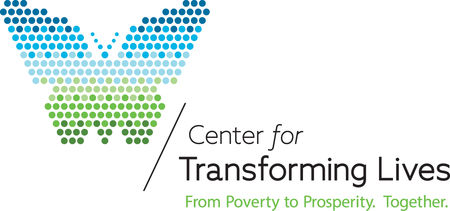August 6, 2025
.png)
Dear friends,
What are your favorite play space memories from your childhood? I don’t know about you, but I grew up in the era when we were told to go outside in the summer and not come back until dark. I remember playing in the creek bed near our house, fishing for crawdads and tadpoles. Some years after we moved into our neighborhood in east Arlington, they did put in a playground, but what I most remember as the most fun was climbing mounds of dirt. Simple fun, but what we were really doing was exploring, taking risks, building a sense of mastery and independence. Something many children today don't have — and that we're excited to provide at our new Riverside Campus.
Children who grow up in any form of homelessness, including living in motels or moving from couch to couch, rarely get outside time. During their early years, they spend significant amounts of time in child ‘containers’ such as car seats, bouncy seats, and umbrella strollers. This is often in an effort to keep them safe but may also be an effort to keep them from being in the way of adults, especially adults who may be prone to dangerous outbursts of temper. Additionally, these children rarely go out of doors, again due to safety concerns of violent neighborhoods where they may be exposed to gun violence and other various crimes.
All this containment and lack of exposure to the outdoors has a devastating impact on developing brains and bodies. A child who is constantly physically restricted will not develop gross motor skills, coordination, and strength on time. The neurological pathways in the brain that are required for coordinated crawling, walking, running, and jumping aren’t developed along the expected chronological timeline, putting them at risk for being behind when they reach kindergarten. Some studies even link these delays to the development of attention deficit and hyperactivity disorder, lower educational attainment, and vision problems. Children who don’t engage with nature may become more stressed, anxious, and prone to emotional challenges.
The child development center at our Riverside Campus is built as a therapeutic intervention for these children. Ten times the size of the playground at our Rosie K. Mauk Center in downtown Fort Worth, it features an old live oak with a giant tree canopy for shade. Rocks and specially treated tree stumps, along with equipment for water play, artwork, and a home environment creation space, along with more traditional playground equipment of swings, a slide and climbing toys create an imaginative outdoor learning environment. The teachers tell me that because the playground is so large, the children have room to spread out. They can play under the tree, as I so often see them do, gathered there and then running off, only to run right back. They can choose to jump from rock to rock or stump to stump. They have freedom of choice and movement, taking what feels like risk in a safe environment, learning to master their own bodies.
Perhaps my favorite aspect, one that you won’t find in most playgrounds today, is the Riverside playground feels like the great outdoors. Children feel like they are in nature. Whether that is because of the forest beyond the fence line, the frequently visiting mockingbirds and red-bellied woodpeckers, or the breeze in the live oak – the playground is healing their brains, their bodies and their hearts.
All children need the outdoors. These children need it more than most.

Carol Klocek
Chief Executive Officer
Categories: Words on the Wing
September 24, 2025
August 6, 2025
July 9, 2025
Center for Transforming Lives partners with single mothers and their children so they can thrive. Our services are two-generational and establish long-term financial and emotional well-being.
3001 S. Riverside Drive
Fort Worth, Texas 76119
-
Copyright 2024
